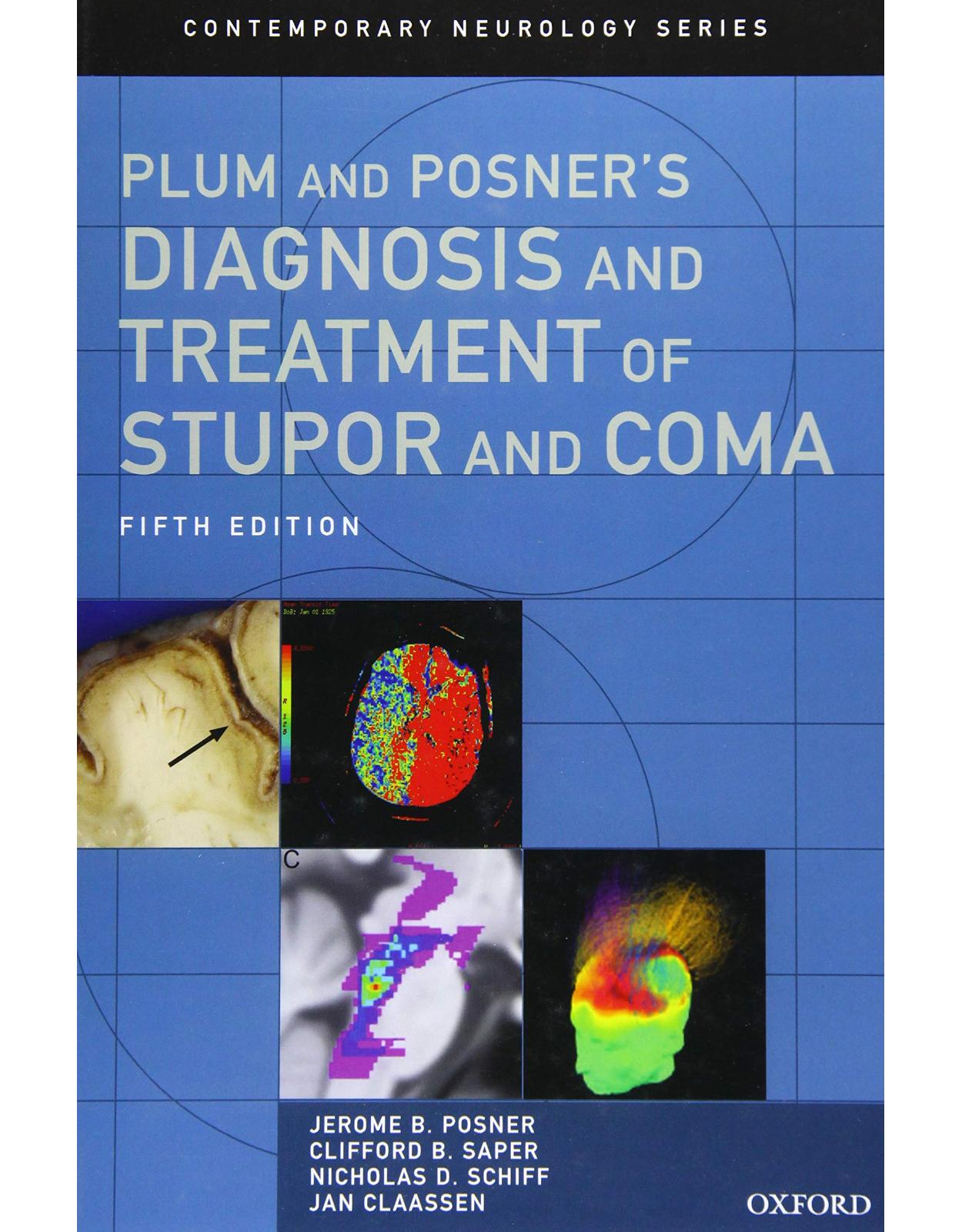
Plum and Posner's Diagnosis and Treatment of Stupor and Coma
Livrare gratis la comenzi peste 500 RON. Pentru celelalte comenzi livrarea este 20 RON.
Disponibilitate: La comanda in aproximativ 4 saptamani
Editura: Elsevier
Limba: Engleza
Nr. pagini: 464
Coperta: Hardcover
Dimensiuni: 25.65 x 3.05 x 17.53 cm
An aparitie: 25 Oct. 2019
Description:
Plum and Posner's Diagnosis and Treatment of Stupor and Coma, 5th edition, is a major update of the classic work on diagnosing the cause of coma, with the addition of completely new sections on treatment of comatose patients, by Dr. Jan Claassen, the Director of the Neuro-ICU at Columbia New York Presbyterian Hospital.
The first chapter of the book provides an up-to-date review on the brain mechanisms that maintain a conscious state in humans, and how lesions that damage these mechanisms cause loss of consciousness or coma.
The second chapter reviews the neurological examination of the comatose patient, which provides the basis for determining whether the patient is suffering from a structural brain injury causing the coma, or from a metabolic disorder of consciousness.
The third and fourth chapters review the pathophysiology of structural lesions causing coma, and the specific disease states that result in coma.
Chapter five is a comprehensive treatment of the many causes of metabolic coma.
Chapter 6 review psychiatric causes of unresponsiveness and how to identify and treat them.
Chapters 7 and 8 review the overall emergency treatment of comatose patients, followed by the treatment of specific causes of coma.
Chapter 9 examines the long term outcomes of coma, including the minimally conscious state and the persistent vegetative state, and how they can be distinguished, and their implications for eventual useful recovery.
Chapter 10 reviews the topic of brain death and the standards for examination of a patient that are required to make the determination of brain death.
The final chapter 11 is by J.J. Fins, a medical ethicist who was invited by the other authors to write an essay on the ethics of diagnosis and treatment of patients who, by definition, have no way to approve of or communicate about their wishes. While providing detailed background for neurological and neurosurgical specialists, the practical nature of the material in this book has found its greatest use among Internists, Emergency Medicine, and Intensive Care specialists, who deal with comatose patients frequently, but who may not have had extensive neurological training.
Table of Contents:
1. Pathophysiology of Signs and Symptoms of Coma
Altered States of Consciousness
Definitions
Consciousness
Acutely Altered States of Consciousness
Subacute or Chronic Alterations of Consciousness
Approach to the Diagnosis of the Comatose Patient
Physiology and Pathophysiology of Consciousness and Coma
The Ascending Arousal System
Behavioral State Switching
Relationship of Coma to Sleep
The Cerebral Hemispheres and Conscious Behavior
Structural Lesions that Cause Altered Consciousness in Humans
2. Examination of the Comatose Patient
Overview
History
General Physical Examination
Level of Consciousness
ABC: Airway, Breathing, Circulation
Circulation
Respiration
Pupillary Responses
Examine the Pupils and Their Responses
Pathophysiology of Pupillary Responses: Peripheral Anatomy of the Pupillomotor System
Pharmacology of the Peripheral Pupillomotor System
Localizing Value of Abnormal Pupillary Responses in Patients in Coma
Metabolic and Pharmacologic Causes of Abnormal Pupillary Response
Oculomotor Responses
Functional Anatomy of the Peripheral Oculomotor System
Functional Anatomy of the Central Oculomotor System
The Ocular Motor Examination
Interpretation of Abnormal Ocular Movements
Motor Responses
Motor Tone
Motor Reflexes
Motor Responses
False Localizing Signs in Patients with Metabolic Coma
Respiratory Responses
Pupillary Responses
Ocular Motor Responses
Motor Responses
Major Laboratory Diagnostic Aids
Blood and Urine Testing
Computed Tomography Imaging and Angiography
Magnetic Resonance Imaging and Angiography
Magnetic Resonance Spectroscopy
Neurosonography
Lumbar Puncture
Electroencephalography and Evoked Potentials
3. Structural Causes of Stupor and Coma
Compressive Lesions as a Cause of Coma
Compressive Lesions May Directly Distort the Arousal System
Compression at Different Levels of the Central Nervous System Presents in Distinct Ways
The Role of Increased Intracranial Pressure in Coma
The Role of Vascular Factors and Cerebral Edema in Mass Lesions
Herniation Syndromes: Intracranial Shifts in the Pathogenesis of Coma
Anatomy of the Intracranial Compartments
Patterns of Brain Shifts that Contribute to Coma
Clinical Findings in Uncal Herniation Syndrome
Clinical Findings in Central Herniation Syndrome
Clinical Findings in Dorsal Midbrain Syndrome
Safety of Lumbar Puncture in Comatose Patients
False Localizing Signs in the Diagnosis of Structural Coma
Destructive Lesions as a Cause of Coma
Diffuse, Bilateral Cortical Destruction
Destructive Disease of the Diencephalon
Destructive Lesions of the Brainstem
4. Specific Causes of Structural Coma
Introduction
Supratentorial Compressive Lesions
Epidural, Dural, and Subdural Masses
Epidural Hematoma
Subdural Hematoma
Epidural Abscess/Empyema
Dural and Subdural Tumors
Subarachnoid Lesions
Subarachnoid Hemorrhage
Subarachnoid Tumors
Subarachnoid Infection
Intracerebral Masses
Intracerebral Hemorrhage
Intracerebral Tumors
Brain Abscess and Granuloma
Infratentorial Compressive Lesions
Epidural and Dural Masses
Epidural Hematoma
Epidural Abscess
Dural and Epidural Tumors
Subdural Posterior Fossa Compressive Lesions
Subdural Empyema
Subdural Tumors
Subarachnoid Posterior Fossa Lesions
Intraparenchymal Posterior Fossa Mass Lesions
Cerebellar Hemorrhage
Cerebellar Infarction
Cerebellar Abscess
Cerebellar Tumor
Pontine Hemorrhage
Supratentorial Destructive Lesions Causing Coma
Vascular Causes of Supratentorial Destructive Lesions
Carotid Ischemic Lesions
Distal Basilar Occlusion
Venous Sinus Thrombosis
Vasculitis
Infections and Inflammatory Causes of Supratentorial Destructive Lesions
Viral Encephalitis
Acute Disseminated Encephalomyelitis
Concussion and Other Traumatic Brain Injuries
Mechanism of Brain Injury During Closed Head Trauma
Mechanism of Loss of Consciousness in Concussion
Delayed Encephalopathy After Head Injury
Infratentorial Destructive Lesions
Brainstem Vascular Destructive Disorders
Brainstem Hemorrhage
Basilar Migraine
Posterior Reversible Leukoencephalopathy Syndrome
Infratentorial Inflammatory Disorders
Infratentorial Tumors
Central Pontine Myelinolysis
5. Metabolic and Diffuse Encephalopathies: Disruption of the Internal Milieu
Part 1: Distinguishing Metabolic from Structural Coma
Key Features of the Neurological Examination in Metabolic Encephalopathies
Part 2: The Internal Milieu: An Overview of Cerebral Metabolism and the Environment Necessary to Maintain Normal Neuronal Function
Cerebral Blood Flow, Oxygen, and Glucose Utilization
Ionic Environment in the Brain and Cortical Spreading Depolarization
Synaptic Environment in the Brain and Seizures
Part 3: Disorders of the Internal Milieu: Lack of Substrate
Cerebral Hypoxia and Ischemia
Hyperoxia
Hypoglycemia
Cofactor Deficiency
Mitochondrial Disorders
Part 4: Disorders of the Internal Milieu: Ionic and Osmotic Environment
Hyponatremia
Hypernatremia
Hypercalcemia
Hypocalcemia
Metabolic Acidosis (Disorders of Systemic Acid–-Base Balance)
Hyperglycemic Hyperosmolar State
Part 5: Disorders of the Internal Milieu: Hormonal and Temperature
Hypothyroidism
Hyperthyroidism
Adrenal Gland
Hypothermia
Hyperthermia
Part 6: Disorders of the Internal Milieu: Electrical Environment
Seizure Disorders
Cortical Spreading Depression
Part 7: Disorders of the Internal Milieu: Abnormal CSF Pressure or Constituents
Intracranial Hypertension
Intracranial Hypotension
Subarachnoid Hemorrhage
Acute Bacterial Meningitis
Chronic Bacterial or Fungal Meningitis
Viral Meningitis Versus Encephalitis
Acute Viral Encephalitis
Carcinomatous Meningitis
Part 8: Disorders of Endogenous Toxins
Hypercarbia
Hepatic Encephalopathy
Renal Failure
Pancreatic Encephalopathy
Systemic Septic Encephalopathy
Autoimmune Disorders: Specific Antibodies
Part 9: Disorders of Exogenous Toxins
Sedative/Hypnotic Drugs and Anesthetics (GABA A Receptor Enhancers)
Intoxication with “Endogenously Produced” Benzodiazepines
Ethanol Intoxication and Ethanol Withdrawal
Ketamine, Phencyclidine (NMDA Receptor Antagonist Drugs)
Antidepressants
Neuroleptics
Opiates
Intoxication with Antipyretic/Analgesic Medications
Intoxication with Drugs of Abuse
Intoxication with Drugs Causing Metabolic Acidosis
6. Psychogenic Unresponsiveness
Conversion Reactions
Catatonia
Psychogenic Seizures
Cerebellar Cognitive Affective Syndrome
“Amytal Interview”
7. Initial Management of Patients with Stupor and Coma
A Clinical Regimen for Diagnosis and Management
Algorithm and Principles of Emergency Management
Support Vital Signs: Airway, Breathing, and Circulation
Ensure Oxygenation, Airway, and Ventilation
Maintain the Circulation
History, Exam, and Basic Diagnostics
Emergency Neurological Examination of the Comatose or Stuporous Patient
Verbal Responses
Respiratory Pattern
Eye Opening
Pupillary Reactions
Eye Position at Rest
Spontaneous Eye Movement
Oculocephalic Responses
Caloric Vestibulo-Ocular Responses
Corneal Responses
Motor Responses
Tendon Reflexes
Skeletal Muscle Tone
Emergent Treatment for All Patients with Stupor or Coma
Hypoglycemia or Hyperglycemia
Thiamine
Antidotes
Infections
Intracranial Pressure
Seizures
Hypo- and Hyperthermia
Acid–Base Abnormalities
Control Agitation
Protect the Eyes
More Definitive Diagnosis and Treatment of Specific Etiologies of Stupor and Coma
8. Management of Frequently Encountered Causes of Unconsciousness
Structural Lesions: Supratentorial or Infratentorial Compressive/Destructive Etiologies
Aneurysmal Subarachnoid Hemorrhage
Intracerebral Hemorrhage
Traumatic Brain Injury
Subdural and Epidural Hematoma
Arterial Ischemic Stroke
Venous Sinus Thrombosis
Brain Tumor
Brain Abscess
Nonstructural Lesions: Metabolic, Diffuse, or Multifocal Coma
Central Nervous System Infections
Acute Disseminated Encephalomyelitis
Hypoxic Brain Injury/Cardiac Arrest
Metabolic Coma
General Management Considerations Applying to All or Most Brain-Injured patients
Goals of Care
A Final Word
9. Prognosis in Coma and Related Disorders of Consciousness and Mechanisms Underlying Outcomes
Introduction
Prognosis in Coma
Prognosis by Disease State
Traumatic Brain Injury
Nontraumatic Coma
Vascular Disease
Central Nervous System Infection
Autoimmune Encephalitis and Encephalomyelitis
Hepatic Coma
Prolonged Hypoglycemia
Depressant Drug Poisoning
Prognosis in Disorders of Consciousness
Vegetative State
Minimally Conscious State
Locked-In State
Mechanisms Underlying Outcomes of Coma: Investigational Studies of Disorders of Consciousness
Functional Imaging of the Vegetative State
Atypical Behavioral Features in PVS
Isolated Neuroimaging of Cortical Responses in PVS Patients
Functional Neuroimaging of Minimally Conscious State
Conceptualizing Patterns of Restoration of Cerebral Network Activity in Disorders of Consciousness Following Coma
Functional Imaging of Recovery of Consciousness: Linked Roles of the Anterior Forebrain Mesocircuit and Default Mode Network/Posterior Medial Complex
Cognitive Motor Dissociation
Assessments of Patients with Chronic Disorders Of Consciousness: An Empirical Guide to Time-Limited Pharmacologic Trials
10. Brain Death
Determination of Brain Death
Clinical Signs of Brain Death
Brainstem Function
Confirmatory Laboratory Tests and Diagnosis
Diagnosis of Brain Death in Profound Anesthesia or Coma of Undetermined Etiology
Pitfalls in the Diagnosis of Brain Death
Brain Death Versus Prolonged Coma
Management of the Brain Dead Patient
11. Disorders of Consciousness in Clinical Practice: Ethical, Legal and Policy Considerations
Professional Obligations and Clinical Discernment
An Emerging Nosology and Ethic of Care
Brain States
Coma
Brain Death
Vegetative State
Unresponsive Wakefulness Syndrome
The Minimally Conscious State
Neuroethics of Covert Consciousness
Normative Significance of Covert Consciousness
Ancillary Care Obligations
Translating Research to Practice
Capacity, Competence, and Surrogate Decision-Making
Decision-Making Capacity
Surrogate Decision-Making
Reemergent Agency
Mosaic Decision-Making
Communication Strategies
Time Delimited Communication
Goals of Care
Institutional Context of Care
Intensive Care
Discharge Planning
Rehabilitation and Long-Term Care
Neuropalliative Care
Pain and Suffering
Withholding and Withdrawing Life-Sustaining Therapy
Family Burden and Bereavement
Rights Come to Mind
Index
| An aparitie | 25 Oct. 2019 |
| Autor | Jerome B. Posner MD, Clifford B. Saper MD PhD, Nicholas D. Schiff MD |
| Dimensiuni | 25.65 x 3.05 x 17.53 cm |
| Editura | Elsevier |
| Format | Hardcover |
| ISBN | 9780190208875 |
| Limba | Engleza |
| Nr pag | 464 |

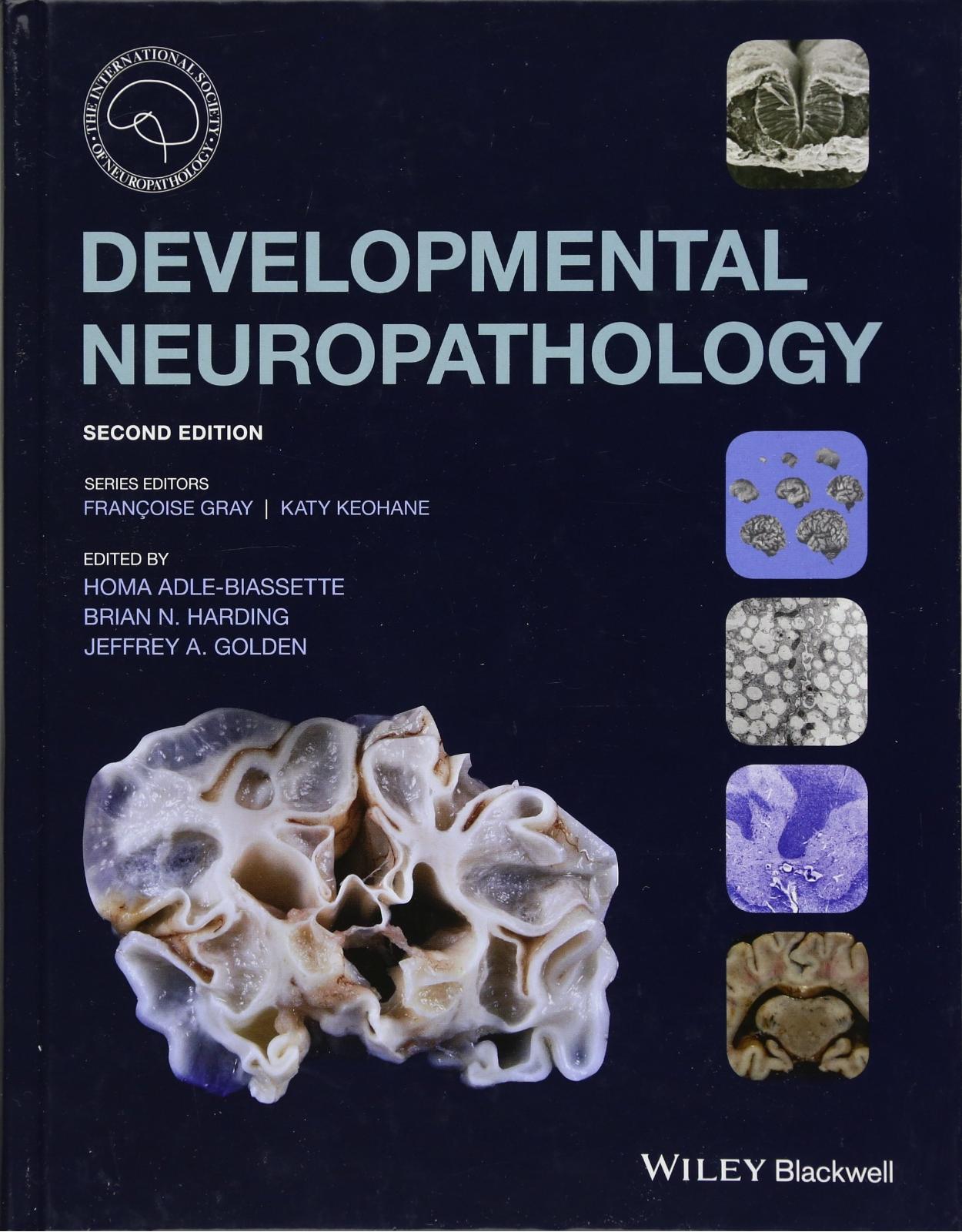
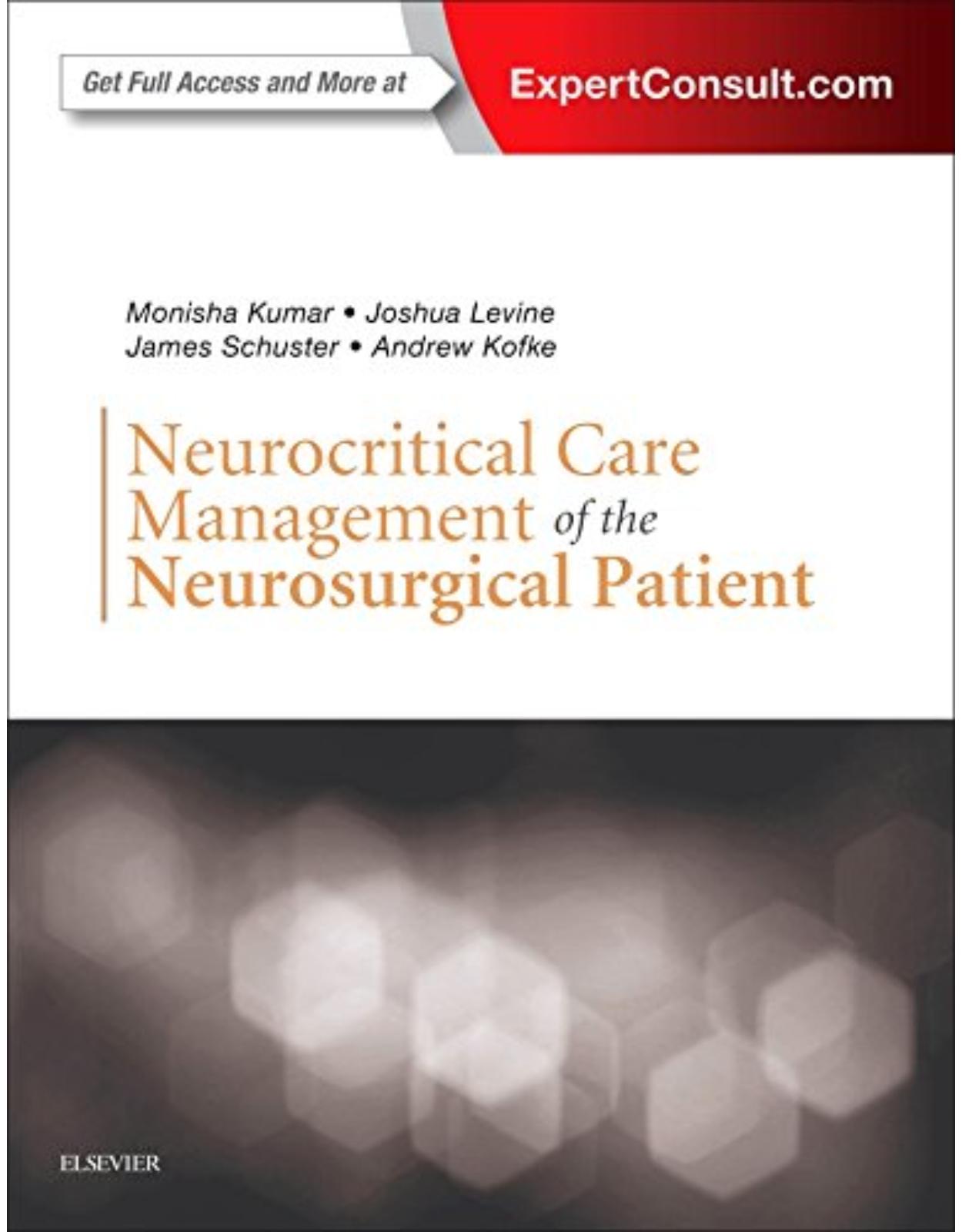
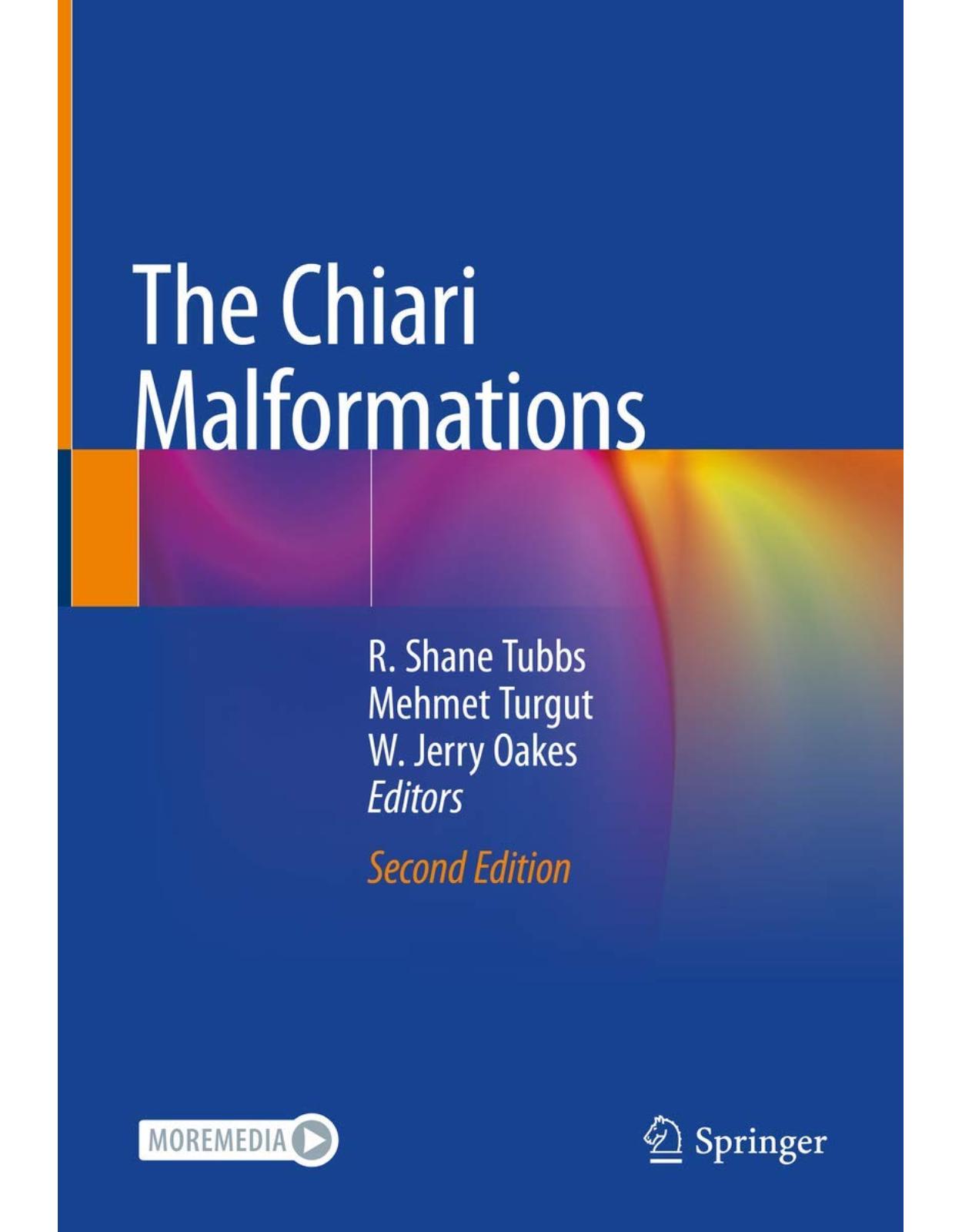
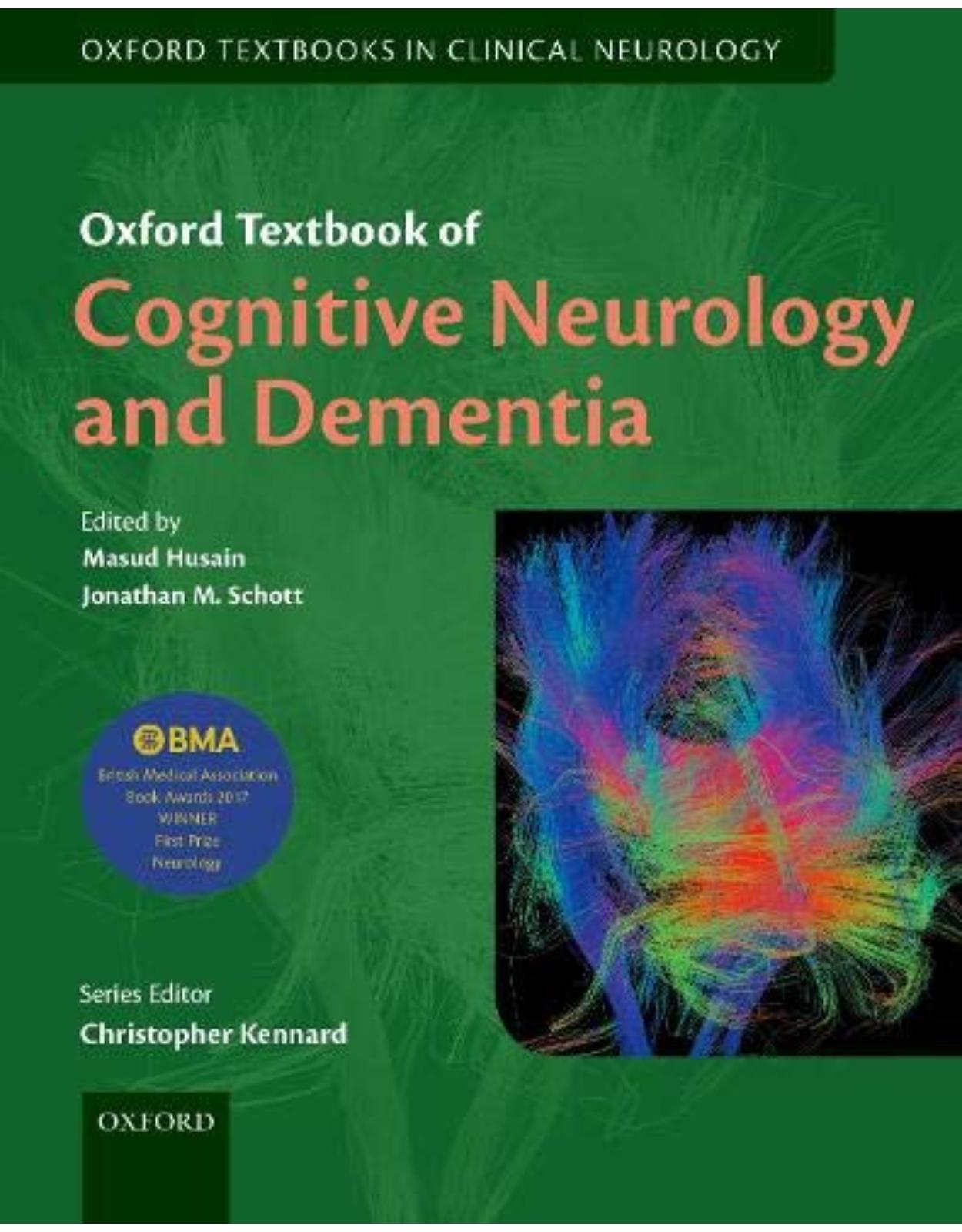
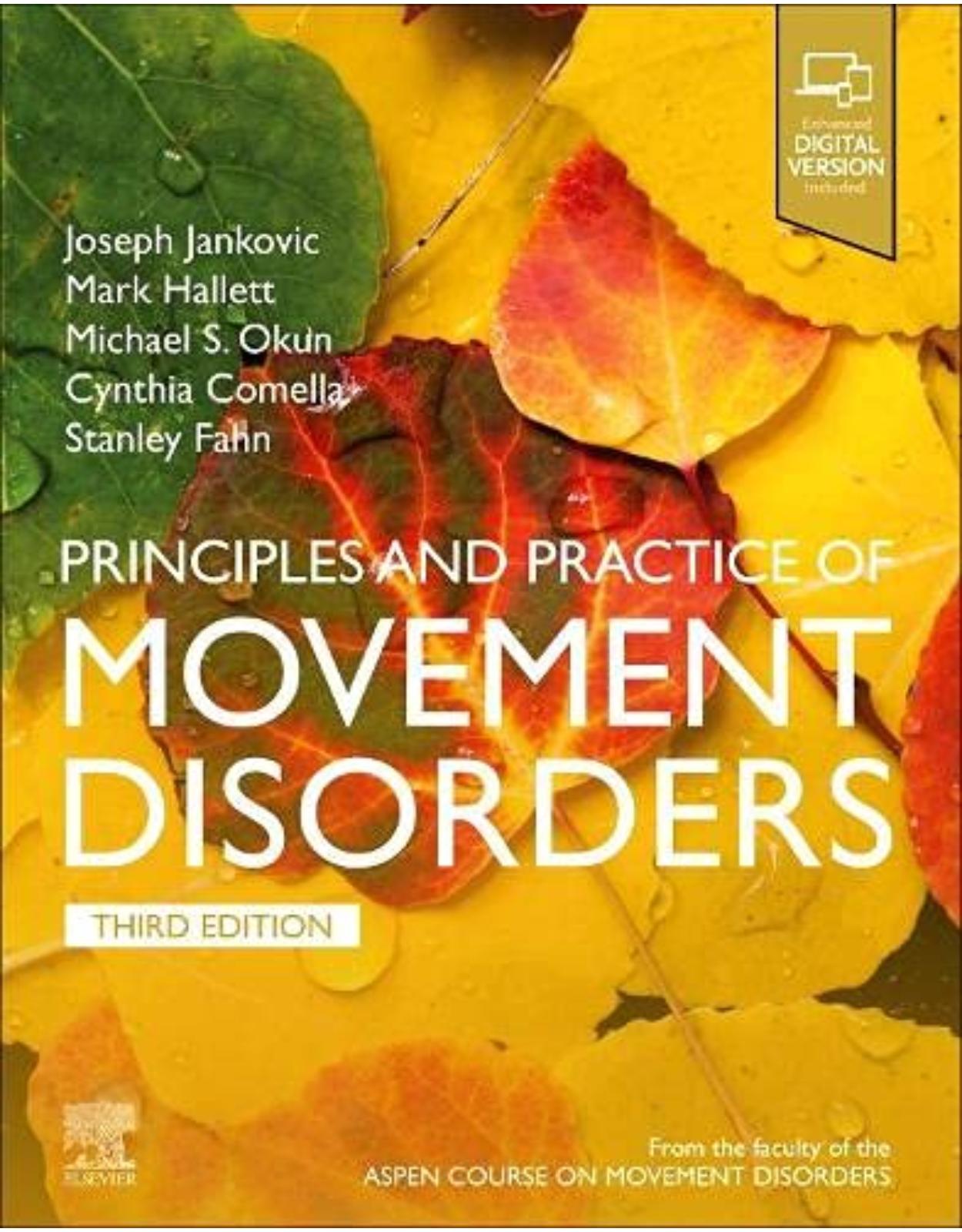
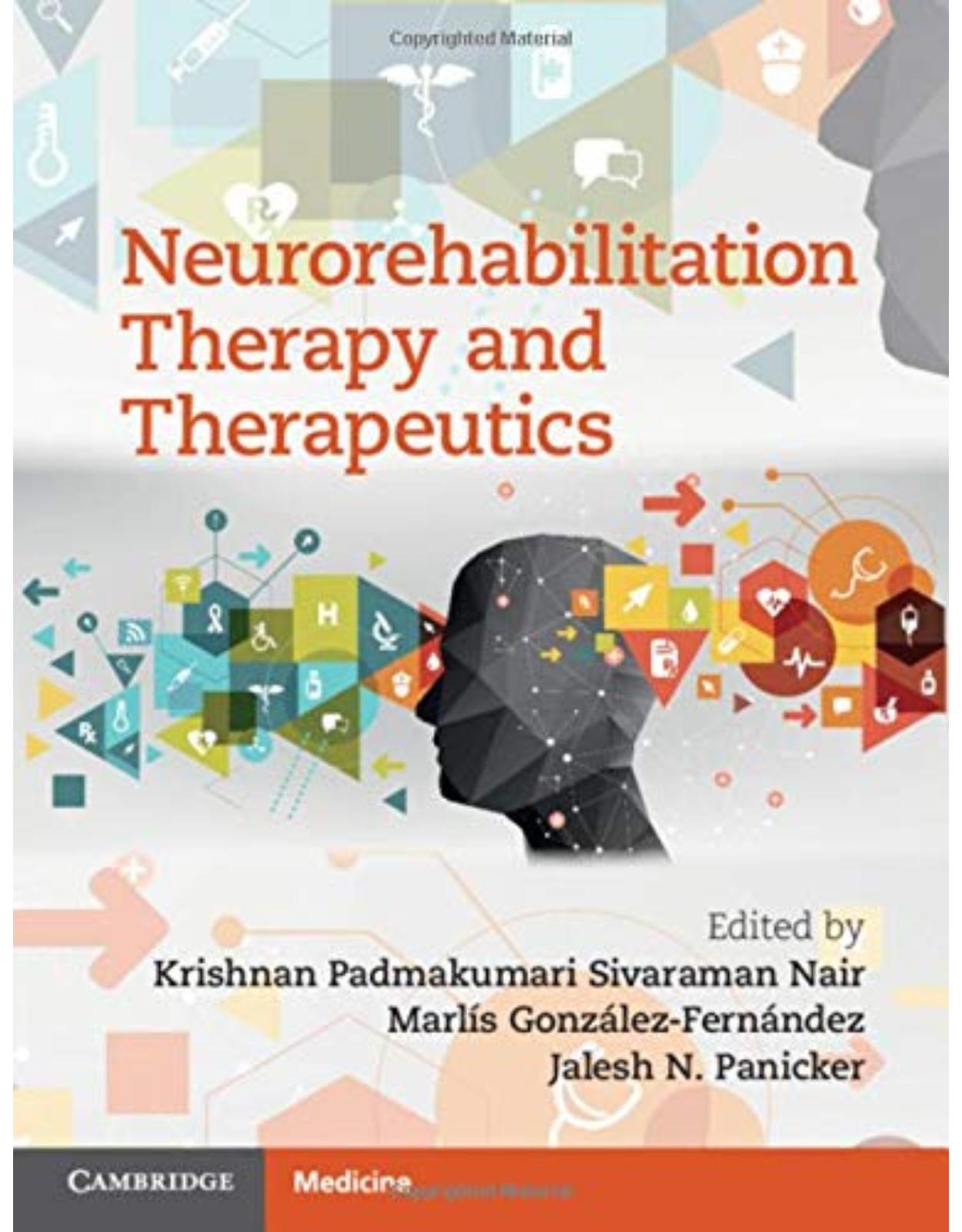
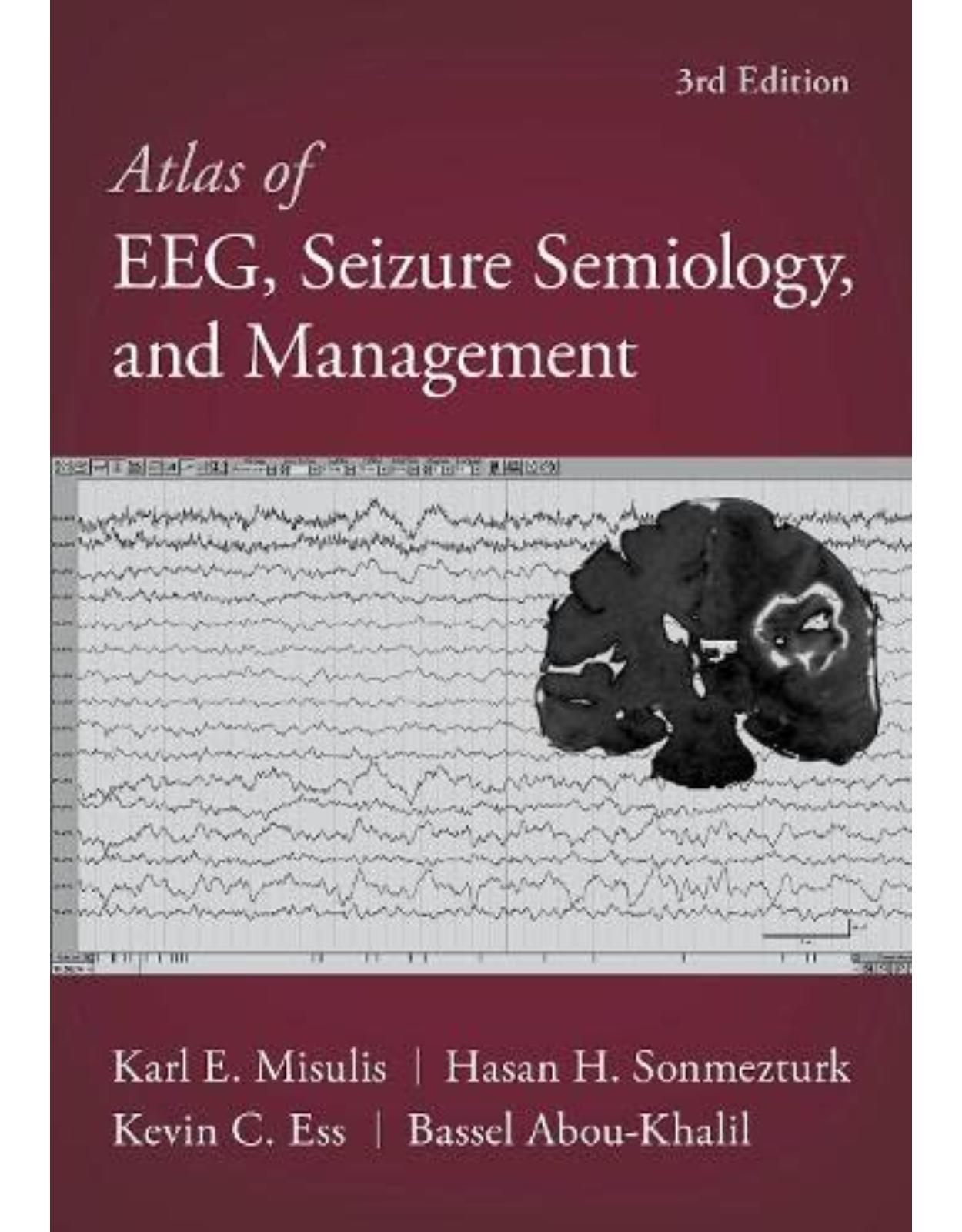
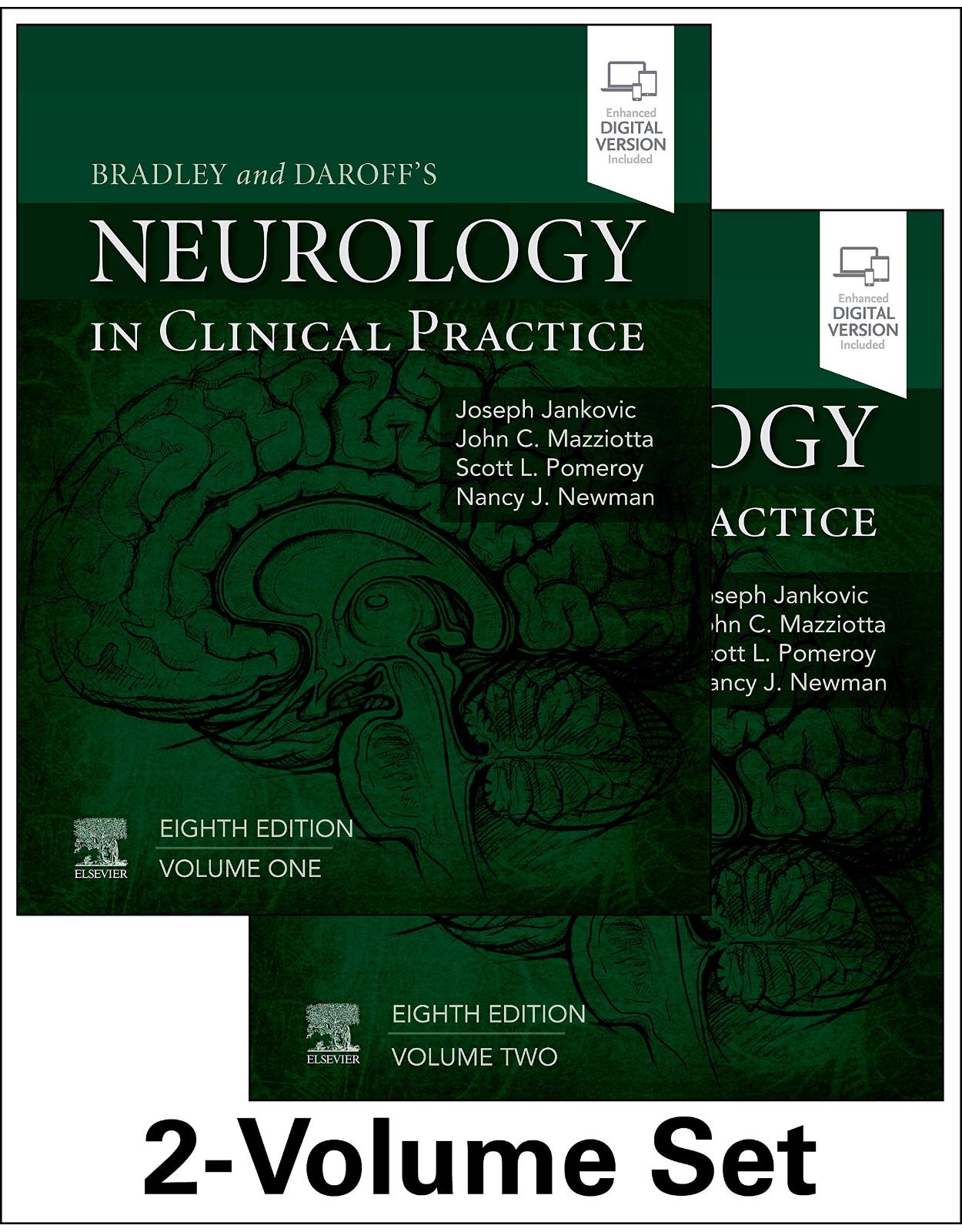

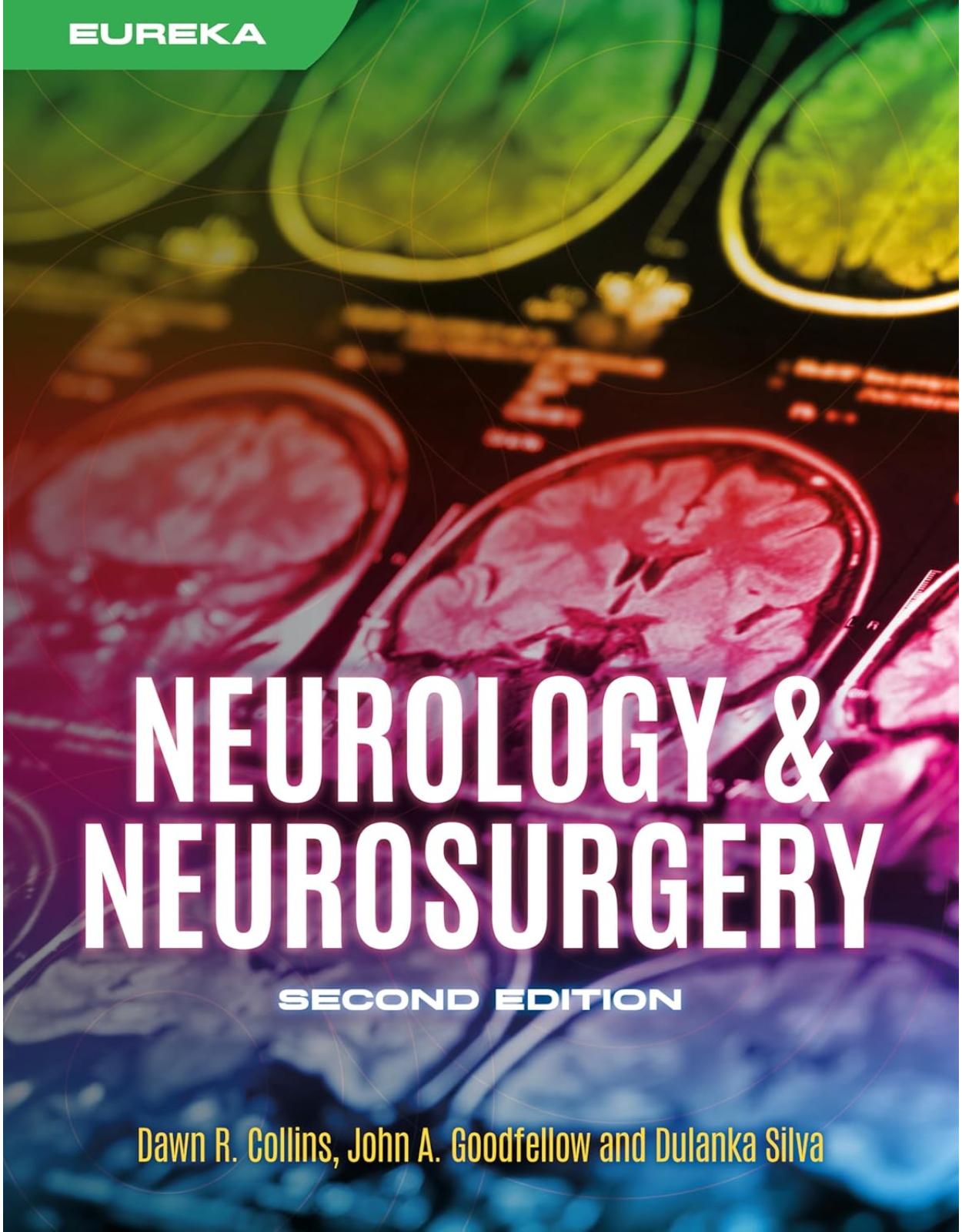
Clientii ebookshop.ro nu au adaugat inca opinii pentru acest produs. Fii primul care adauga o parere, folosind formularul de mai jos.